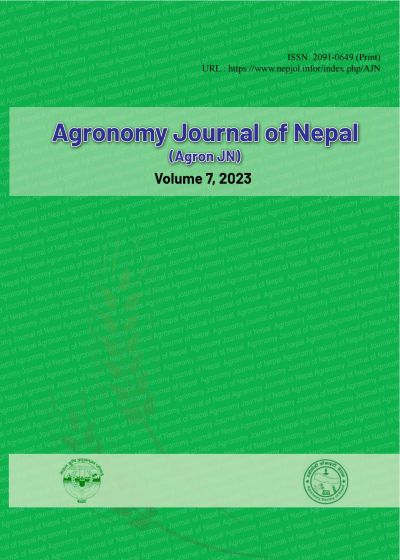Impact of Age of Seeding and Varieties on Yield and Yield Attributing Characters of Rice in Central Terai Region of Nepal
DOI:
https://doi.org/10.3126/ajn.v7i1.62154Keywords:
seedlings, varieties, yield, rice, ageAbstract
The objective of this study was to evaluate the response of age of seedling and varieties on yield and yield attributing characters of rice. A field experiment was conducted at Directorate of Agriculture research, Parwanipur in two main season from 2018-2019. The experiment was designed in split plot with two factors; seedling age 20, 30, 40, 50 days and varieties Chaite-5, Radha-14 and Bahuguni-1 as main and sub-factors, respectively. The result was analyzed using Zen-stat ver.15. The results revealed there were no significant impact of all varieties in term of yield in pooled condition (Chaite-5, Bahuguni-1 and Radha-14 yielded 5376 kg ha-1, 4943 kg ha-1, 4357 kg ha-1, respectively), whereas age of seedling significantly influenced the yield and yield attributing characters in both years and in pooled condition. The yield of rice was significantly higher for twenty days aged seedling (6080 kg ha-1) in 2018 and 4628 kg ha-1 in 2019 and 5354 kg ha-1 in pooled and followed by consecutive old aged seedling. In conclusion, twenty days aged seedling would be the best option for the optimum production in Central Terai Region of Nepal.
Downloads
Downloads
Published
How to Cite
Issue
Section
License
Copyright (c) 2023 Agronomy Society of Nepal (ASoN)

This work is licensed under a Creative Commons Attribution-NonCommercial 4.0 International License.
ASON permits for free use, distribution and reproduction in any medium if the original work is properly cited and not used for commercial purposes.




